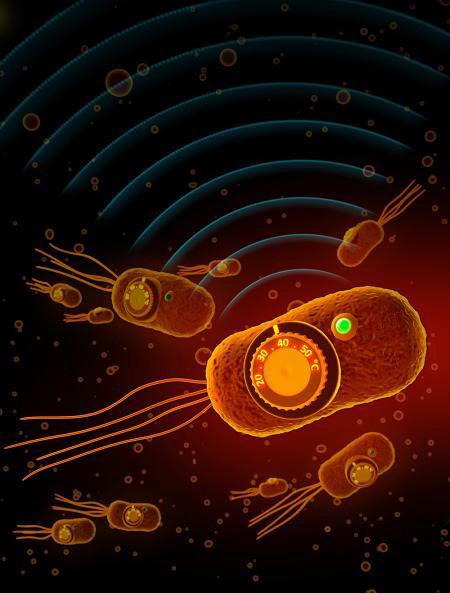This post was originally published on Medium.

New research from the California Institute of Technology, published this week in Nature Chemical Biology, demonstrates how bacteria can be engineered to respond to temperature cues, and how these molecular bioswitches can be harnessed to fight disease.
Mikhail Shapiro, the study’s principle investigator and an assistant professor of chemical engineering at Caltech, describes how his lab used thermal switches in bacteria to control a variety of behaviors.
“Bacteria can be designed to act like special agents fighting disease in our bodies. We’re building walkie-talkies for the cells so we can both listen and talk to them.”
Shapiro’s team — which included co-lead authors Dan Piraner and Mohamad Abedi, both graduate students in Shapiro’s Caltech lab — used mice to showcase three different use cases for their engineered bacteria. The first scenario concentrated on spatially targeted activation.
Imagine you could load up bacteria with the tools to produce a specific drug, and then direct that bacteria to a specific site in the body. This type of therapy would be enormously useful in cancer treatments, where you would want to target tumour sites. With their mouse model, the Caltech lab effectively showed how this could work.
After injecting the mice with their bacteria, they used focused ultrasound to heat up targeted sites on the mice’s bodies, but at temperatures low enough not to damage the tissue itself. This in turn activated the bacteria at those sites.
In their second scenario, the Caltech lab was able to harness fever in the host mouse and use that as a temperature cue for the bacteria. For this they designed a genetic circuit using a bioswitch that could control bacterial growth based the host’s temperature. With this type of switch, bacterial production of therapeutic medicine could be regulated by cues from the host patient — if the patient suddenly develops a fever, bacterial growth or production would stop.
Finally, with designer bacteria, proper disposal is always a concern since the last thing you would want is to have your genetically modified, pharmaceutically active bacterial running rampant outside your patient. To prevent this, the Caltech team engineered a kill switch that would trigger self-destruction of the bacteria once it’s exited the body as fecal matter and hits colder temperatures outside the body.
How were these bioswitches created? In the study, the lab took a look at the thermal bioswitches already present in nature. Specifically, this included a protein in Salmonella typhimurium and another found in a bacteriophage. Using a process called “directed evolution”, the lab fine-tuned the temperatures at which these proteins activate, growing strains of E. coli that would express a variant of the Salmonella protein that would activate at lower temperatures than normally seen in nature.
This research shows what’s possible when it comes to microbial therapeutics, and how bioswitches found in the natural world can be repurposed and calibrated to respond to new temperature cues.